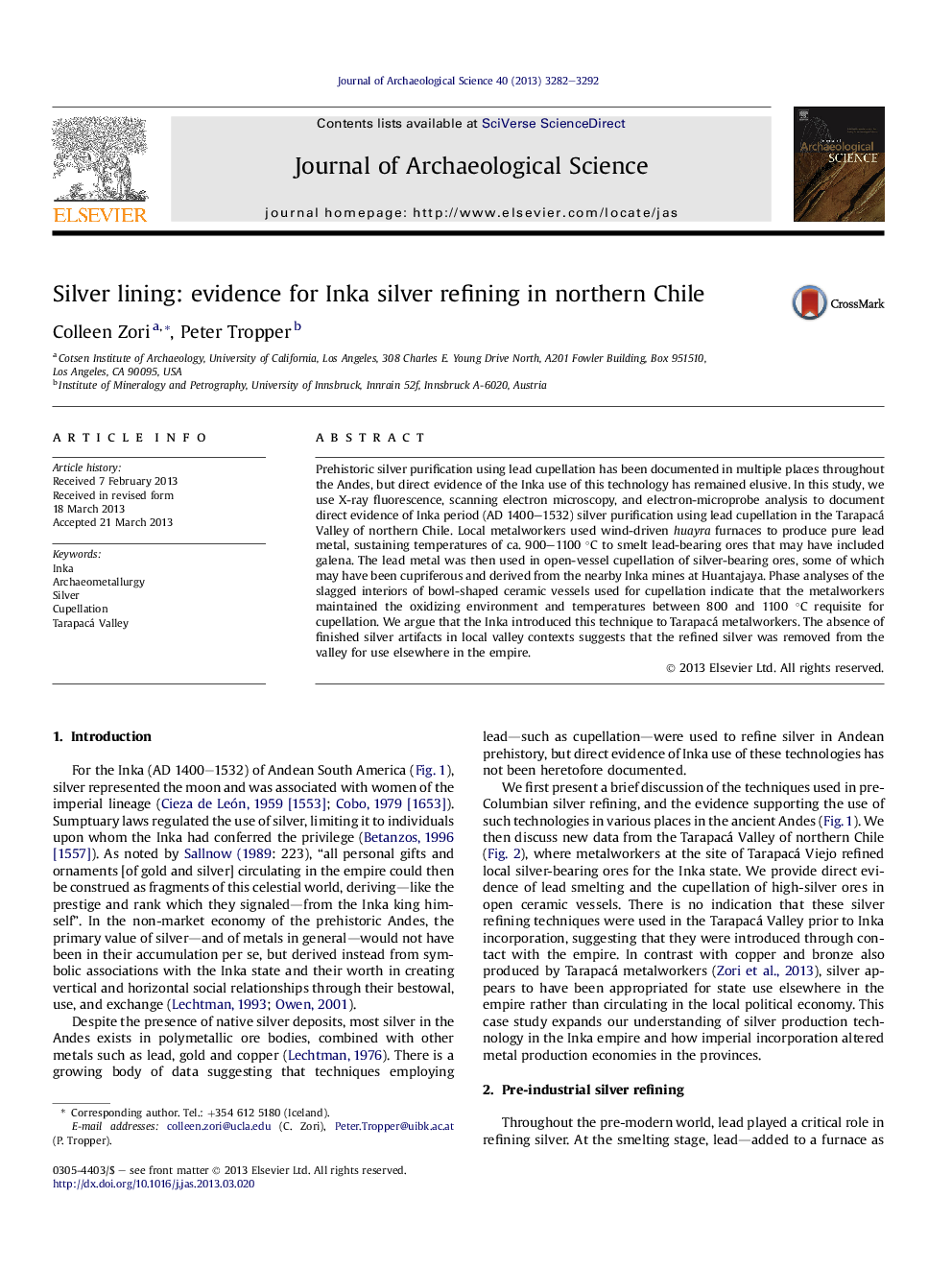| کد مقاله | کد نشریه | سال انتشار | مقاله انگلیسی | نسخه تمام متن |
|---|---|---|---|---|
| 1035413 | 943847 | 2013 | 11 صفحه PDF | دانلود رایگان |

• The Inka introduced silver refining techniques to metalworkers of northern Chile.
• Tarapacá Valley inhabitants employed wind-driven huayra furnaces to smelt lead.
• This lead was used in cupellation to purify silver-bearing ores at Tarapacá Viejo.
• We provide technical details of lead smelting and silver cupellation processes.
• Silver was appropriated by the Inka for use outside of the Tarapacá Valley.
Prehistoric silver purification using lead cupellation has been documented in multiple places throughout the Andes, but direct evidence of the Inka use of this technology has remained elusive. In this study, we use X-ray fluorescence, scanning electron microscopy, and electron-microprobe analysis to document direct evidence of Inka period (AD 1400–1532) silver purification using lead cupellation in the Tarapacá Valley of northern Chile. Local metalworkers used wind-driven huayra furnaces to produce pure lead metal, sustaining temperatures of ca. 900–1100 °C to smelt lead-bearing ores that may have included galena. The lead metal was then used in open-vessel cupellation of silver-bearing ores, some of which may have been cupriferous and derived from the nearby Inka mines at Huantajaya. Phase analyses of the slagged interiors of bowl-shaped ceramic vessels used for cupellation indicate that the metalworkers maintained the oxidizing environment and temperatures between 800 and 1100 °C requisite for cupellation. We argue that the Inka introduced this technique to Tarapacá metalworkers. The absence of finished silver artifacts in local valley contexts suggests that the refined silver was removed from the valley for use elsewhere in the empire.
Journal: Journal of Archaeological Science - Volume 40, Issue 8, August 2013, Pages 3282–3292